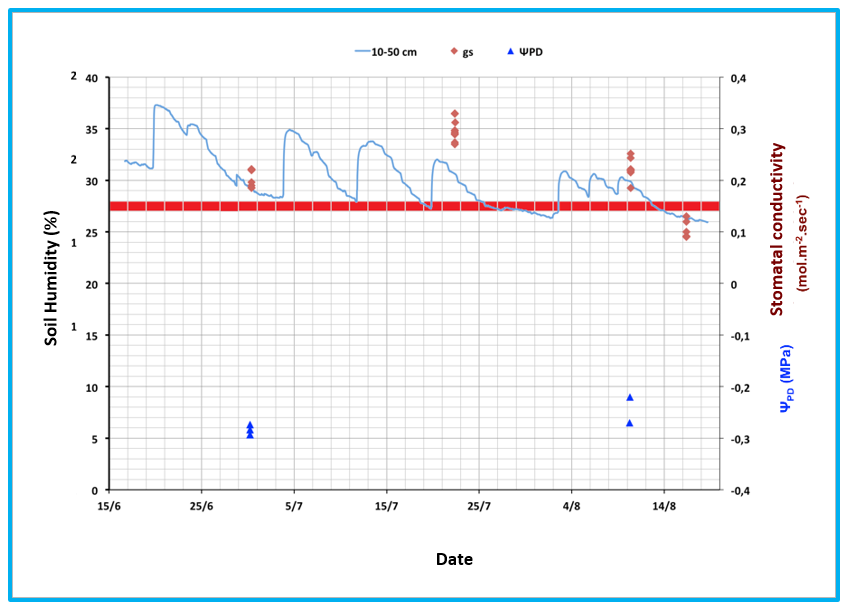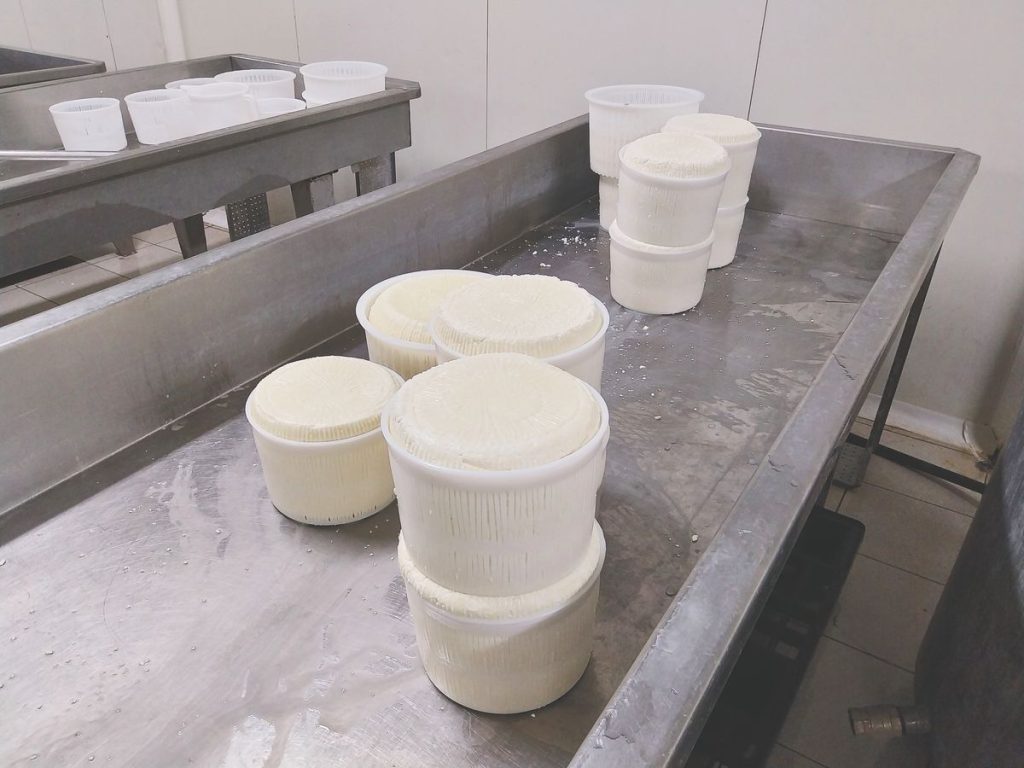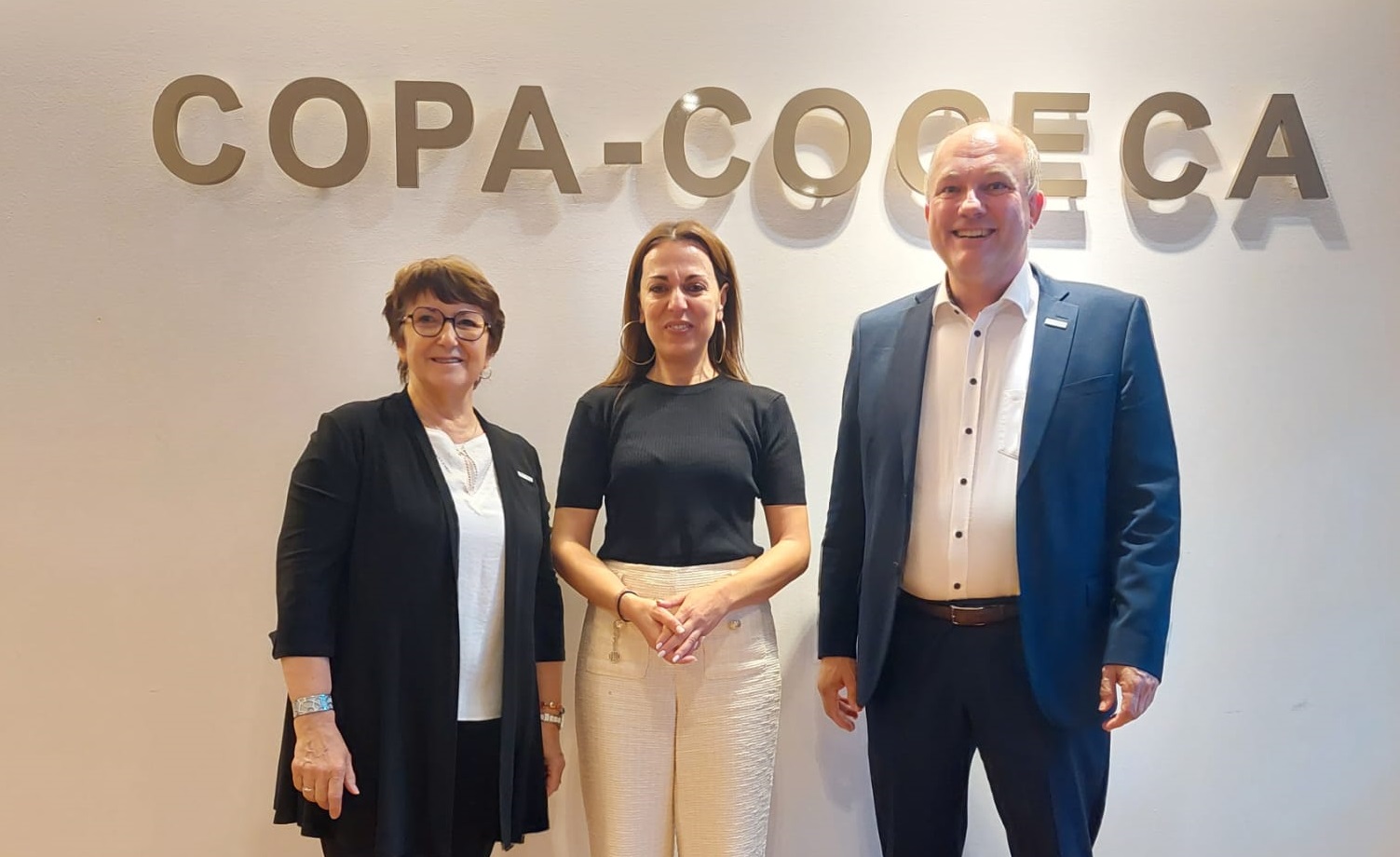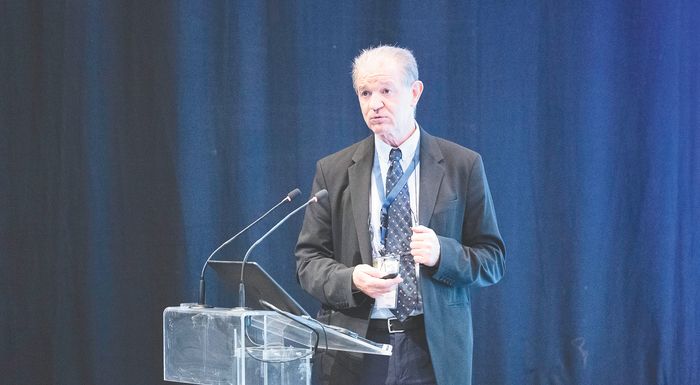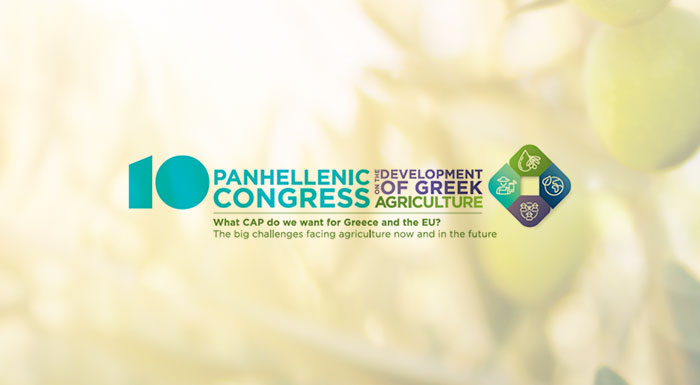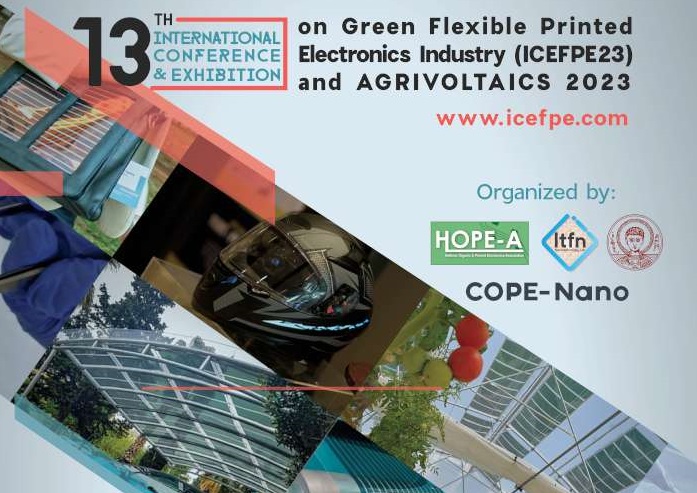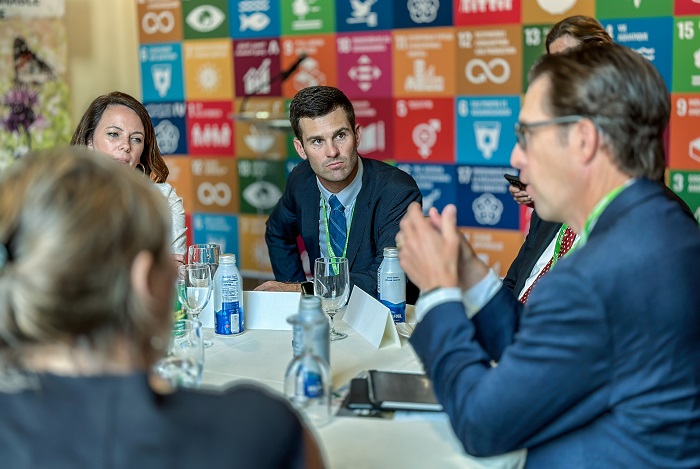Applying Smart Farming services in the case of table grapes in Southern & Northern Greece
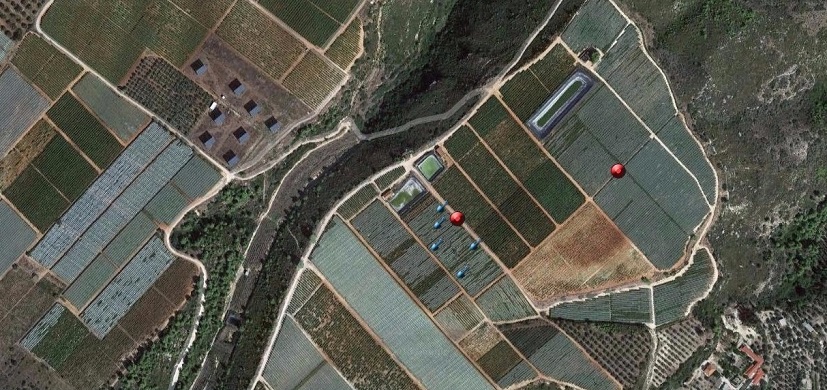
GAIA Epicheirein’s Smart Farming project is not only applied in the case of olives and dry beans, but also in the case of table grapes. In this case, GAIA Epicheirein is collaborating with the agricultural cooperative Pegasus «7 Grapes», which started with just 7 producers back in 2010 having more than 55 now, and featuring vineyards of a total of 1,200 hectares in the areas of Corinth, Pella as well as in Thessaly. The cooperative has its own modern packing unit and exports almost 100% of its production – a fact that highlights the role of the product’s quality, due to the strict criteria set by markets of the EU as well as the contracts with customers (large retailers) that precisely define quality aspects of the product.
The aim of the project’s first year is the detailed recording of the microclimate and the soil of the areas studied, observation of the producers’ cultivation practices and the response of the pest control, fertilization and irrigation models under the specific conditions. In this context, six GAIATron Atmo telemetric stations were installed in six different vineyards of different areas around Stimagka, Corinth as well as one vineyard in the area of Krya Vrysi in Pella. In both locations GAIATron soil telemetric stations were installed as well. The installation of the telemetric stations τtook place in a way that allows the precise recording of the microclimatic differentiations and their impact on the yield.
On top of that, scientific collaborators of the project installed a system recording soil parameters, allowing the mapping of the vines’ root system which consequently allows the precise estimation of their needs in terms of irrigation.
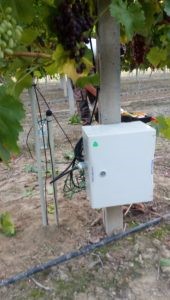
Irrigation
Irrigation is one of the factors that significantly affect grape production, both qualitative and quantitative. This year’s cultivation period was characterised by adverse weather conditions for growing grapes, such as drought throughout the year, heat during the flowering period and high minimum temperatures during the night. These conditions, combined with the reduced availability of irrigation water, led to qualitative and quantitative υποβάθμιση της παραγωγής. Due to the aforementioned reasons, emphasis was given in the study of irrigation.
In order to precisely record the needs of the vines in terms of irrigation water, special sensors were used for the distribution of the active root system in the soil, followed by the calculation of average soil moisture level as well as the value below which vines exhibit water stress symptoms. These levels were estimated at 13% for the region of Stimagka and 28% for the region of Krya Vrysi. This differentiation is caused by both climatic and soil factors, as well as the differences in the irrigation needs of the different grape varieties cultivated in the two studied areas.
Next to that, the water potential management model was adapted in order to meet the requirements of the specific cultivation and the optimal amount of water needed by the vines at each given time was calculated.
The comparison of the actual soil moisture levels with the percentage below which water stress is observed, showed that the Stimagka vineyard were incorrectly stressed in terms of water during a period with increased needs in water; a fact that had a negative effect in production. On the other hand, in the area of Krya Vrysi, water stress is only observed during the grape ripening period; a fact that is according to the international good practices for the specific crop. As a result, the production not only was quantitatively increased but its quality was also improved.
These results highlight the need for application of irrigation with precision in quantity and time, something that can be achieved only through the previse recording of the water condition of the soil and plants, as well as the quantity of irrigation water that is provided to plants. During the 2nd year of the project, the irrigation models will be adapted, in order to allow the consultation of farmers in the form of advice that will take into consideration adverse environmental conditions. On top of that, the optimum approaches for meeting such conditions will be adapted, in order to avoid or at least mitigate their effects on the production.
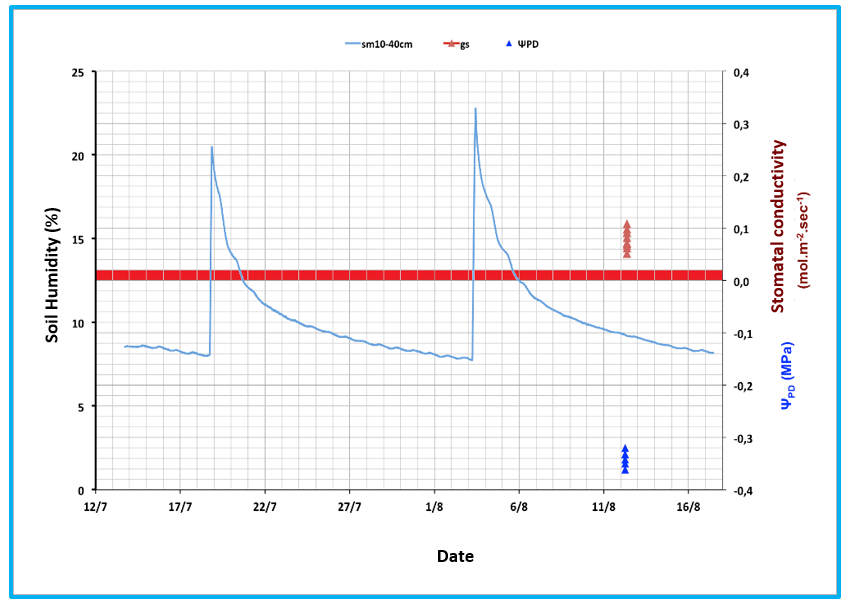
Pest control and fertilization
Pest control and fertilization are issues of high importance due to the effect that both have on the quality and quantity of production. Working groups for the specific issues have already been set up, including members of the cooperative and the project’s scientific collaborators. The outcomes will be presented in details in the next year of the project.
During the first year, in terms of fertilization, the fertilization schedule followed by the producers was recorded, along with related issues identified and soil analyses took place in order to allow the precise depiction of the soil nutritional status. These analyses highlighted the alkaline nature of the soil, including high pH values and CaCO3 levels, both of which affecting the soil fertility. Next to that, leaf analysis was performed, to allow a precise depiction of the plants’ nutritional status and their response to the applied inputs of fertilizers. During the next year, the scientific models for fertilization, which are fed by the results of the soil and leaf analyses, also taking into consideration the existing nutritional issues, will help shape fertilization advice adapted to the specific characteristics of the area and the increased needs of the crop for the production of quality products.
As long as pest control is involved, during the first year of the project the main pests and diseases of the vineyards in both areas were recorded, such as the European grapevine moth and pseudococcus, as well as downy mildew, botrytis bunch rot and powdery mildew of grape, respectively. In addition, the microclimatic conditions of both areas were recorded and studied, focusing on the ones that are favorable for their appearance. This analysis, combined with the use of insect traps and the existence of vineyards which will be free of pesticide applications (standards), will contribute during the 2nd year of the project to the adaptation of the scientific models for the grape enemies observed. This will allow the development of advice for the periods which exhibit high risk of infection or indestation. The microclimatic conditions of each area differentiate both the appearance and the level of infection / infestation, as observed in the case of the European grapevine moth and the downy mildew.
The effect of soil on the production and the post-harvest preservation
Complementary to the Smart Farming project of GAIA Epicheirein, an experiment took place in a vineyard of the Stimagka area. The experiment took place in the context of the PhD thesis of Mr. Vangelis Anastasiou, under the supervision of Ass. Professor Spyros Fountas from the Agricultural Engineering Lab of the Agricultural University of Athens.
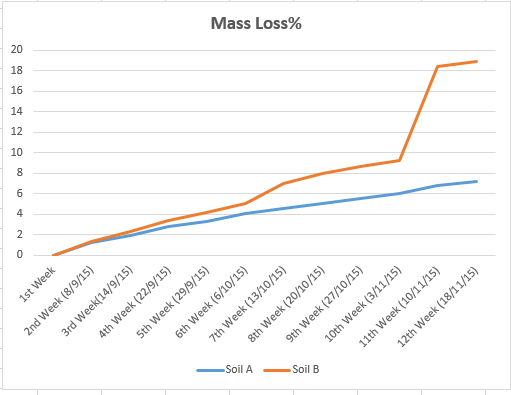
One of the attributes of the specific vineyard is the existence of two different soil types, sand clay loam (Soil Α) and clay loam (Soil B). The aim of this experiment was the study of the effect of the spatial variability on the attributes of the produced table grapes, as well as on its post-harvest preservation.
| Parameter | Soil A | |||
| Min. value | Max. value | Average | Variability % | |
| Production (kg/ha) | 14082 | 38432 | 23364 | 29% |
| Berry diameter (mm) | 24,05 | 26,80 | 25,88 | 2,40% |
| Berry weight (g) | 10,97 | 13,5 | 12,61 | 5,90% |
| Sugar concentration (οBrix) | 16,3 | 20,9 | 18,23 | 6,20% |
| Total Acidity (%) | 0,1 | 0,36 | 0,21 | 26% |
| Preservation value | 48,89 | 209 | 94,2 | 35% |
| Robustness index during ripening | 0,775 | 0,824 | 0,806 | 1,40% |
| Robustness index during harvesting | 0,727 | 0,792 | 0,767 | 1,90% |
| Table 1: Qualitative and quantitative characteristics of table grape per soil type. |
| Parameter | Soil Β | |||
| Min. value | Max. value | Average | Variability % | |
| Production (kg/ha) | 22388 | 31826 | 27045 | 9,10% |
| Berry diameter (mm) | 24,51 | 27,88 | 25,6 | 3,60% |
| Berry weight (g) | 11,2 | 13,79 | 12,57 | 6,80% |
| Sugar concentration (οBrix) | 15,7 | 19,8 | 18,07 | 7,20% |
| Total Acidity (%) | 0,12 | 0,39 | 0,22 | 31% |
| Preservation value | 45,14 | 149,17 | 89,45 | 27% |
| Robustness index during ripening | 0,764 | 0,823 | 0,808 | 1,80% |
| Robustness index during harvesting | 0,741 | 0,793 | 0,772 | 1,60% |
Table 2: Qualitative and quantitative characteristics of table grape per soil type.
The vineyard was split in 36 cells in which growth measurements took place (Figure 1), such as plant robustness, preservation of the produced grape, weight and diameter of berry, produced quantity, total sugars and total acidity.
Soil B exhibited higher mean production compared to Soil Α along with slightly higher values of robustness index during ripening & harvesting thanks to the increased ability of maintaining soil moisture. On the other hand, Soil A exhibited slightly higher average values in terms of qualitative attributes (berry diameter and weight, sugar concentration) and preservation index compared to Soil B (Table 1).
Grape samples from the two soil types were subject to laboratory analyses regarding post-harvest management. The results showed that different soil types affect post-harvest handling of table grapes in the fridge. In this context, table grapes growing in well-draining soils (Soil Α) exhibit lower mass losses in the fridge compared to the ones growing in heavy soils (Soil Β) (Figure 1).
To conclude, recording spatial variability may contribute to the optimization of the application of input in the field and consequently to higher quantity and improved production quality. On top of that, it may improve the post-harvesting preservation of the produced grapes which will eventually lead to higher prices for the producer.
